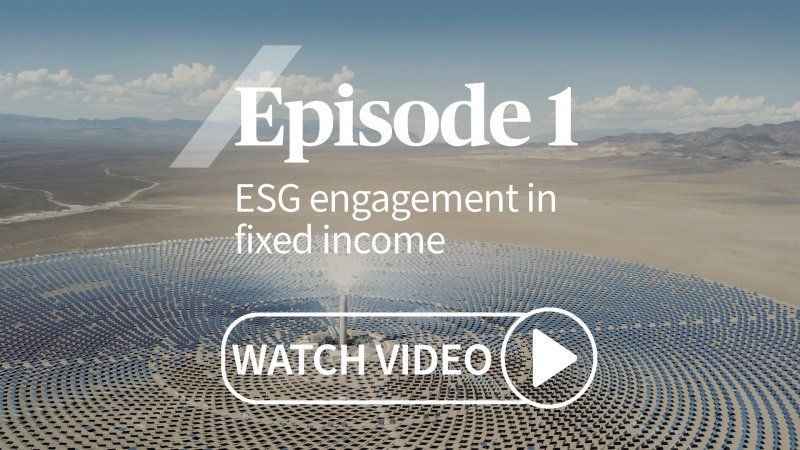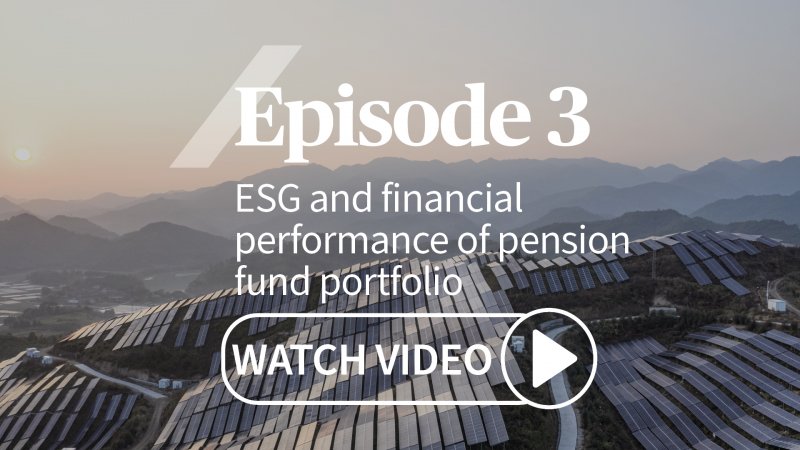What is climate-aware buy and maintain credit?
We base our strategy around three core objectives: Capital preservation, climate alignment and credit return and build our portfolios using a maturity-based approach to climate-risk, with clear objectives over short- to long-term time horizons.
Credit investors must act now to adapt to this new reality, and we have the tools to help them do it.
Why consider investing in climate-aware buy and maintain?
Institutional investors often have a long-term focus, aiming to build resilience both for today and for decades to come. That has made climate-aware investing an inescapable part of portfolio construction.
Long-term credit forms the core of buy and maintain strategies and as an asset class has a natural alignment with the time horizon over which climate-related risks can materialise. What you invest in today should deliver resilience, both by allaying those risks and fostering a successful transition to a low-carbon economy.
One of the key pillars of our approach is the inclusion of specific climate-related objectives that reflect our clients’ priorities and requirements. The goal is a tailored solution that can help protect portfolios against the risks, fulfil regulatory obligations and meet financial objectives – all while positively contributing to the climate transition.
Visit our fund centre
The aim of the strategy is to provide an income and capital return (net of fees) in line with the market for sterling denominated, investment grade bonds issued by companies over the long-term.
View fundsHow do we deliver a climate-aware strategy?
Assess
A surge in the volume and quality of data available around climate risks has made it possible for investors to gain effective insights into how their portfolios from a climate perspective. It has also coincided with increased regulatory scrutiny around climate-related disclosures for institutional investors1.
The outcome of a portfolio assessment might be to seek alignment with the Paris Agreement on climate change. This is often interpreted as the pursuit of net zero greenhouse gas emissions by 2050, with interim goals in place to smooth the journey. We also believe investors should look to the carbon pathway of assets, rather than simply the current footprint, to find best-in-class companies targeting decarbonisation.
Integrate
There is no passive route to building climate-aware portfolios. Once the assessment is complete, security selection is crucial in building investors’ portfolios to mitigate against emerging climate risks while seeking to secure the required financial returns over time.
The vibrant green bonds market will form part of the solution. Additionally, using a best-in-class approach across all sectors can enable schemes to maintain diversification while allocating capital to market leaders to ensure a whole-of-market transition. The maturity of bonds bought is also important as some climate risks are more likely to emerge over time, reducing the appeal of climate laggards at the long end. We use scenario analysis to guide investment decision making in a variety of scenarios, backed by deep fundamental analysis from our 40-strong credit2 research team and a conviction-led, climate-focused engagement programme.
Monitor
Climate investing is constantly evolving. Monitoring the steady flow of new commitments and data is critical if investors are to properly understand whether their climate-aware credit portfolios are achieving their financial and climate objectives.
The next decade will likely see further improvements in the quality and availability of data from issuers. This may include clearer assessments of so-called Scope 3 emissions which relate to the indirect effects of company products and services. More generally, there is significant impetus around the greater use of Science-Based Targets which will aid transparency.
- As an example, larger UK pension schemes must make disclosures around climate risks in line with the requirements of the Task Force on Climate-related Financial Disclosures (TCFD) from October 2021.
- Source: AXA IM, as at 31/12/2020
Videos

Engagement in fixed income

ESG and financial performance of pension fund portfolios
Our ACT Range strategies
Our ACT range is designed to enable our clients to take action on global issues such as climate change through their investments. These strategies go beyond ESG integration, either following a process in which investment decisions are driven by ESG themes or seeking out intentional, positive, measurable and sustainable impact.

Biodiversity
There is an economic and human cost to biodiversity loss which is being addressed through products and services contributing to ecosystem preservation and biodiversity mitigation.

Clean Economy
Innovative companies are creating solutions to address pressures on scarce natural resources and the need for greenhouse gas emission reduction.

Green bonds
Green bonds are among the most interesting innovations of the last decade in the field of socially responsible investment products.

US high yield low carbon
We believe the global economy has entered a ‘decade of transition’ towards a more sustainable, de-carbonised model.

Social progress
Invest in the companies providing strong social utility by making essential products and services better quality, more affordable and more accessible to all.

Social bonds
Rapid growth in the social bonds market offers a compelling opportunity to invest in the social dimension of the transition to a low carbon economy.
Featured strategies for institutional investors
We help institutional investors by building innovative and sustainable custom solutions to support ever-evolving financial, regulatory and stakeholder needs.
Not for Retail distribution
This document is intended exclusively for Professional, Institutional, Qualified or Wholesale Clients / Investors only, as defined by applicable local laws and regulation. Circulation must be restricted accordingly.
This promotional communication does not constitute investment research or financial analysis relating to transactions in financial instruments as per MIF Directive (2014/65/EU), nor does it constitute on the part of AXA Investment Managers or its affiliated companies an offer to buy or sell any investments, products or services, and should not be considered as solicitation or investment, legal or tax advice, a recommendation for an investment strategy or a personalized recommendation to buy or sell securities.
Due to its simplification, this document is partial and opinions, estimates and forecasts herein are subjective and subject to change without notice. There is no guarantee that forecasts made will come to pass. Data, figures, declarations, analysis, predictions and other information in this document is provided based on our state of knowledge at the time of creation of this document. Whilst every care is taken, no representation or warranty (including liability towards third parties), express or implied, is made as to the accuracy, reliability or completeness of the information contained herein. Reliance upon information in this material is at the sole discretion of the recipient. This material does not contain sufficient information to support an investment decision.
Before making an investment, investors should read the relevant Prospectus and the Key Investor Information Document / scheme documents, which provide full product details including investment charges and risks. The information contained herein is not a substitute for those documents or for professional external advice.
The products or strategies discussed in this document may not be registered nor available in your jurisdiction. Please check the countries of registration with the asset manager, or on the web site https://www.axa-im.com/en/registration-map, where a fund registration map is available. In particular units of the funds may not be offered, sold or delivered to U.S. Persons within the meaning of Regulation S of the U.S. Securities Act of 1933. The tax treatment relating to the holding, acquisition or disposal of shares or units in the fund depends on each investor’s tax status or treatment and may be subject to change. Any potential investor is strongly encouraged to seek advice from its own tax advisors.
Past performance is not a guide to current or future performance, and any performance or return data displayed does not take into account commissions and costs incurred when issuing or redeeming units. The value of investments, and the income from them, can fall as well as rise and investors may not get back the amount originally invested. Exchange-rate fluctuations may also affect the value of their investment. Due to this and the initial charge that is usually made, an investment is not usually suitable as a short term holding.
Risk Warning
The value of investments, and the income from them, can fall as well as rise and investors may not get back the amount originally invested.



